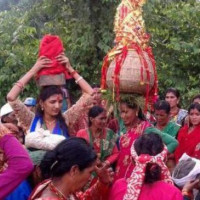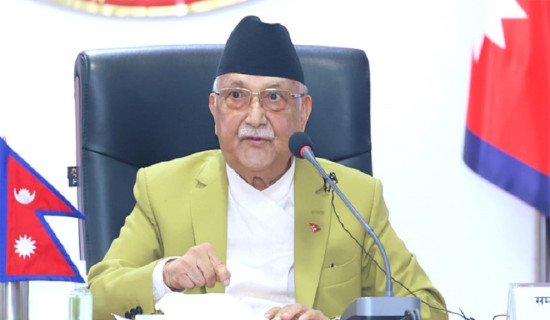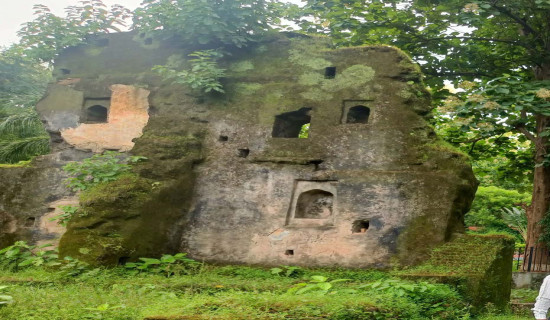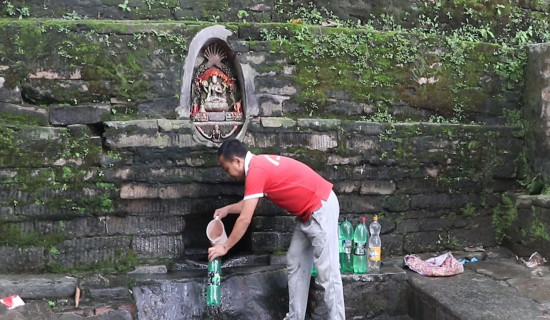- Thursday, 28 August 2025
A market without money: Villagers still barter goods
By Kabiraj Ghimire,Hile, Aug. 28: Shanti Devi Rai of Arun Rural Municipality, Bhojpur, recently travelled to the weekly market at Chanua, Mahalaxmi Municipality-4, Dhankuta, about eight-kilometres away from her village.
Carrying custard apples and tobacco she had grown, she exchanged them for copper vessels, bamboo baskets, lemons and pears. Every Wednesday, she takes produce from her farm to the market and brings back whatever she needs but cannot find in her village.
Buddimaya Tamang, also from Mahalaxmi-4, Namphu village, brought lemons. She returned home with pears and tobacco in exchange. “We have plenty of lemons at home, but not pears or tobacco. That is why I brought lemons to swap,” she said. Tilamaya Thapa of Bhojpur exchanged the tobacco she had carried with lemons, pears and some vegetables.
This scene may sound far-fetched, but it is still a living tradition at Chanua’s Wednesday market in Dhankuta. Unlike other markets where goods and services are bought and sold with money, here people continue to trade goods directly. Most people who come do not spend cash; instead, they take home what they need through simple bartering.
For many, the bartering practice might seem strange today. With modernisation, it has disappeared from most places. In towns and cities, people now shop online or make digital payments without ever touching the cash. Yet in this rural part of Dhankuta, the old system survives, keeping alive a portion of cultural heritage. Farmers from Bhojpur’s Jarayotar bring tobacco and custard apples, while those from Homtang bring groundnuts. They exchange them with vegetables grown in the hilltops of Chanua, Marek Kattare and Dandagau of Mahalaxmi Municipality.
“Farmers from the lowlands (Bensi) trade their crops with those from the highlands (Lekh), and vice-versa,” said local resident Jagat Poudel, adding that this market has helped preserve the ancient barter system. Farmers from Dhankuta, Bhojpur, Sankhuwasabha and Tehrathum also come to trade here.
Bartering existed long before the use of money. When cash was not available, people simply exchanged what they had for what they needed. At Chanua’s market, farmers still determine the value of goods based on the type and quantity and swap them on equal terms.
“People wander around the market with their baskets of produce, looking for what they need and negotiating an exchange,” said local Prasad Rai. Even today, villagers carry their farm produce in dhakars (traditional bamboo baskets) to the market, a practice unchanged despite new roads reaching their villages.
Declining tradition
But compared to the past, bartering is now far less common. Until the late 1990s, most transactions on the market were done through exchange. Today, only a few people still follow the old practice, according to Ward Chair Shukraraj Budhathoki of Mahalaxmi-4. “As people’s interest in markets has declined, so has bartering. The number of elderly traders has fallen, and more young people now dominate the market, who prefer cash.
These days, sellers first try to sell in cash, and only exchange their goods if they remain unsold,” he explained.
According to him, “The market is not as lively as before. Shops have spread across the villages, reducing the need for weekly gatherings. With young people showing up more, bartering is fading away.”
















